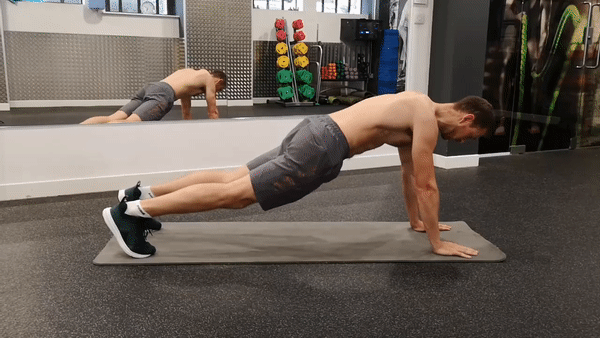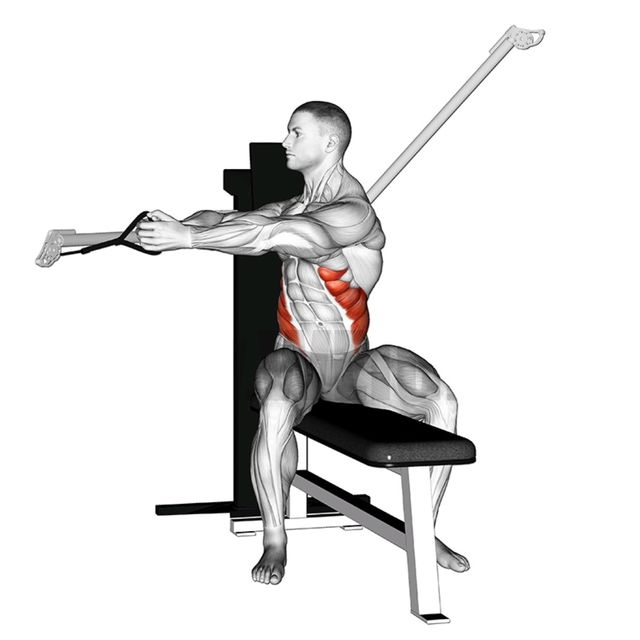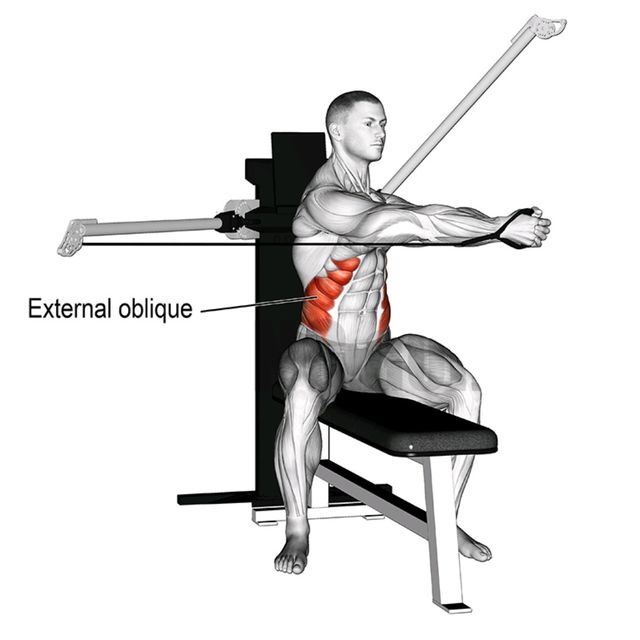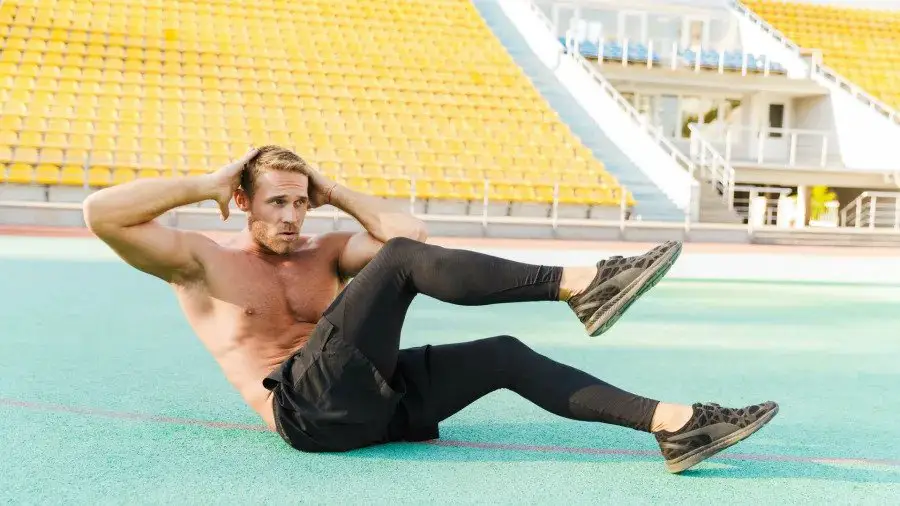It’s time to push your abs to exhaustion—not to mention, fight the flab—with new abs exercises that are anything but routine. And it’s not just a six-pack you’ll get: Maintain strong abs and you’ll help prevent back pain, boost your agility, and increase your flexibility
But no matter how tough these exercises get, always remember the golden rule of core workouts: quality over quantity. If you’re still cranking out 2,000 fast-paced crunches a day, you’re wasting your time (and maybe even hurting your back). Instead of ripping through the motions, slow down and focus on getting the most out of each reps.
With a slow, concentrated effort you’ll be building up to 30-second sets of quality moves—and admiring those washboard abs you’ve always wanted—in no time.
Bicycle Crunches
With Bicycle Crunches or Bicycle Kicks, you extend your legs into the air, like you’re pedaling a bicycle. You will perform this exercise as a variation on ab crunches. The difference is that you always have both feet off the ground during these bicycle crunches.

This makes bicycle crunches a bit harder, than standard ab crunches. Also, it tends to work the lower abs more. Typically, keeping your legs off the ground works the lower abs. Keeping your legs flat, on the other hand, works the middle abs.
Interestingly, bicycle crunches also work the rectus abdominus muscle (upper abs). This is the highest set of ab muscles you have. When people refer to the “eight-pack” as opposed to the “six-pack” these are the two muscles they are talking about. So, if you want an “eight pack” make sure to include bicycle crunches in your workout.
- Main Muscle Used: Abs,
- Secondary Muscles: Hamstrings, Quads
- Equipment Required: None
- Movement: Isolated
- Exercise Type: Push
With this movement, you’re targeting all three key areas at the same time. It combines a regular crunch, the side-to-side motion that targets the obliques, and the reverse crunch that hits the lower abs.
Spiderman Plank Crunch

You likely already know about an exercise known as the plank. It is getting more and more popular nowadays and helps people get slimmer and stronger with minimal time and effort. It has a bunch of variations and modifications, and the spiderman exercise is one of them. This is a body-weight workout, meaning that it doesn’t need any equipment except for a mat. This is a pilates and calisthenics exercise that will help you to train your entire body.
- Get down on all fours and extend your body in an elbow plank position.
- Have your forearms flat on the floor, supporting your upper body and legs extended with your toes balancing your lower body (low plank position).
- Keep your buttocks slightly elevated, back neutral, and abs engaged for support. When seen from the side, your body should be in a straight line.
- Take a breath, and tuck your right knee to your right elbow while supporting yourself on your left foot.
- Tuck your knee as much as you can in one fluid motion and bring it back to the starting position as you exhale.
- Take another breath and tuck your left knee to the left elbow in the same manner.
- Keep alternating between left and right until you finish the set.
Cable Rotation

The cable rotaition targets the transverse abdominis and oblique muscles. These are the muscles that allow you to twist at the waist. It also engages the muscles of your back, shoulders, and legs.1 That makes it a compound exercise. The Cable Rotation is also a functional exercise because we use the same type of motion in everyday life when grabbing something from a shelf and placing it on the floor. For athletes, the movement mimics movements used in many sports, such as swinging a bat or golf club.
Research indicates that strong rotational power is correlated with better sports performance.2 Performing exercises such as the cable wood chop are one way that athletes can work toward their peak potential.
- Attach a hand grip to the cable machine, positioning the cable anchor near the top of the frame using the adjustable mechanism.
- Load the machine with sufficient weight to provide moderate resistance.
- Position your body so that the cable movement will be downward and across the body—like a tree-chopping action.
- Extend the arms and grasp the cable handle with both hands above one shoulder, keeping the feet shoulder-width apart, a neutral spine, and knees slightly bent.
- Pull the handle downward and diagonally across the body slowly, until it passes the opposite thigh. Rotate the entire torso during the pull and keep the arms fully extended throughout the movement.
- Hold for a count of one or two.
- Perform the movement in reverse, returning the cable handle to the starting position.
Seated Variations of the Cable Rotation / Cable Wood Chop


Starting position Place a bench to the side of a cable pulley. Set the pulley to seated shoulder height. Straddle the bench, with your feet flat on the floor. Twist your torso and grasp the stirrup with both hands. Straighten your torso and arms. Your arms should be parallel with the floor and the cable should be pulled taut. Execution Keeping your torso and arms straight, exhale as you slowly rotate your torso to the opposite side. Hold for a count of two. Inhale as you reverse the motion and return to the starting position. Repeat for the prescribed number of repetitions. Repeat the exercise with your opposite side.
Dragon Flag

Dragon flags may appear complicated at first, but we’ve outlined these steps to make them less complex for you.
Here’s how to do a dragon flag:
- You’ll start with the basic dragon flag progression. Here, you’ll either position yourself face up on a bench or the floor.
- Lift your arms above your head, and steady yourself with the bench (if you’re on a bench) or column or pole behind you (if you’re on the floor).
- Bring your thighs to a 90-degree angle by bending your knees.
- Lift your hips off the ground and move your weight to your shoulders, in turn lifting your entire torso in the process.
- Using the same motion as a reverse crunch, lift your legs until they’re nearly vertical and your toes are pointed towards the sky.
- Avoid slouching or bending at the hips by keeping your core braced and your body rigid.
- Slowly lower your legs until your body forms a straight line. This straight line should be from your shoulders to your hips and your toes.
- Balance your full weight on your shoulders and hold onto that position for a few seconds.
- Release the position and slightly lower your torso until it is barely off the floor or bench and your feet hover above the surface.
You can repeat this for about five sets of five repetitions, depending on your calisthenics routine.
Dragon flag muscles worked, typically include the:
- Transverse abdominis;
- Internal and external obliques; and
- Rectus abdominis.
Apart from working your core muscles, the dragon exercise engages other areas of your body. These are your gluteal complex for buns of steel, your pelvis-stabilizing adductors, and your erector spinae.


